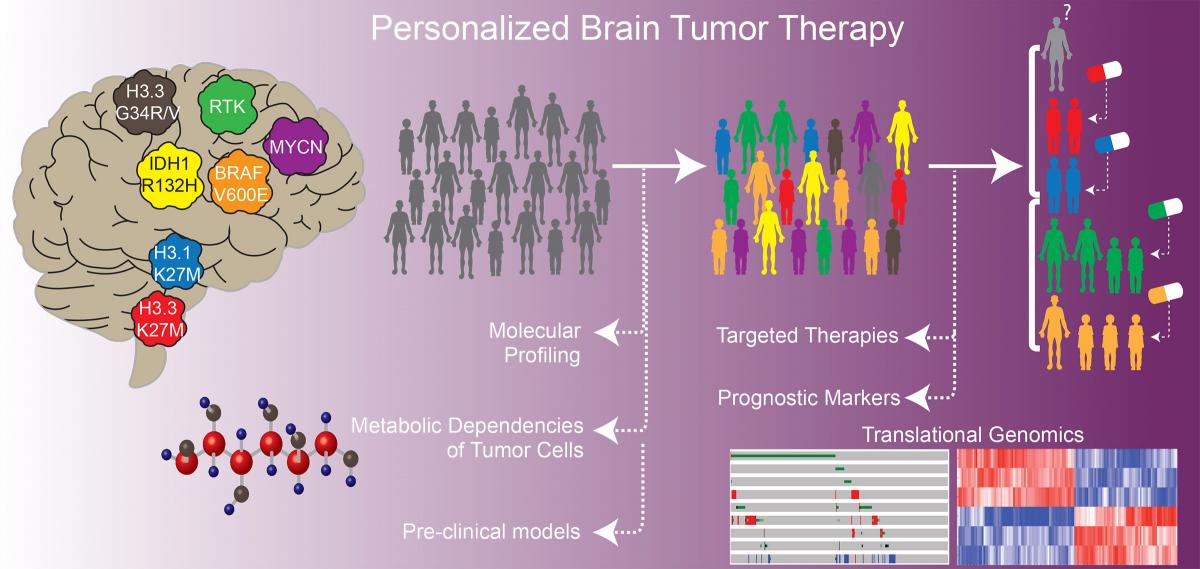The Brain Tumor Biology and Therapy Laboratory, under the direction of Sameer Agnihotri, PhD, and has a focus on several topics:
1) It is now appreciated that HGG glioma comprises of several molecular subgroups and that the genetics of pediatric and adult HGG are distinct. Therefore a “one size that fits all” approach to therapy will not be successful. The Agnihotri Laboratory interests include using next-generation sequencing technology to identify and validate driver alterations of various HGG with a focus on DIPG and non-histone mutated “RTK” Glioblastoma (GBM).
2) A defining hallmark of glioblastoma and DIPG is altered tumor metabolism. The metabolic shift towards aerobic glycolysis with reprogramming of mitochondrial oxidative phosphorylation, regardless of oxygen availability, is a phenomenon known as the Warburg effect. In addition to the Warburg effect, glioblastoma tumor cells also utilize the tricarboxylic acid cycle/oxidative phosphorylation in a different capacity than normal tissue. The Agnihotri Laboratory investigates the metabolic dependencies of brain tumors and if they can provide therapeutic vulnerabilities.
3) The lab uses the genomic and metabolic information to build better representative brain tumor pre-clinical models for testing of novel therapies. Working closely with a clinical team use of these accurate models are essential to start early phase clinical trials.

Brain tumors occur in different regions of the brain and have distinct genomics. Molecular profiling, metabolic studies and better pre-clinical models of these subgroups allows for stratification of patients into meaningful biological and clinical subgroups. Once stratified, appropriate therapies can be applied allowing for personalized brain tumor therapy.
